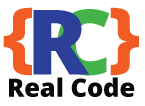What is a landing page and why is it important?
A landing page is a standalone web page specifically designed to capture leads or drive conversions, making it essential for marketing campaigns. Unlike regular web pages, a landing page focuses on a single objective, which increases the likelihood of converting visitors into leads or customers.
What are the key elements of a high-converting landing page?
Key elements of a high-converting landing page include a compelling headline that captures attention, engaging visuals that support the message, a clear call-to-action (CTA) that guides the user, and persuasive copy that addresses user needs. For example, a headline like “Unlock Your Potential with Our Exclusive Course” immediately highlights the benefit, while a bold CTA like “Start Your Free Trial” encourages action.
How do I choose the right goal for my landing page?
Choosing the right goal for your landing page involves determining the primary action you want visitors to take. Whether it’s collecting email addresses, selling a product, or generating leads, clearly defined goals help tailor content and design accordingly. For instance, if your goal is to collect emails, ensure your landing page includes a simple sign-up form and a compelling incentive, like a free eBook.
What are the best practices for writing landing page copy?
Use clear, concise language that directly addresses your audience’s pain points and emphasizes the benefits of your offer. Incorporate social proof, such as testimonials or case studies, to enhance credibility. For example, instead of saying “Our software is easy to use,” state, “Join 10,000+ users who have streamlined their workflow with our user-friendly software.”
How can I design a visually appealing landing page?
To design a visually appealing landing page, prioritize simplicity and ensure that your layout is uncluttered. Use contrasting colors for CTAs to make them stand out. Make sure your design is mobile-friendly and incorporates high-quality images or videos. A good example is Airbnb’s landing page, which uses inviting visuals and a clear layout to attract users.
Why should I use A/B testing on my landing page?
A/B testing is crucial as it allows you to compare two versions of a landing page to identify which elements work best for your audience. By testing different headlines, colors, or layouts, you can optimize conversion rates effectively. For example, a company might find that a green CTA button performs better than a red one, significantly increasing conversions.
What tools can I use to create and optimize landing pages?
Several tools can help you create and optimize landing pages effectively. Platforms like Unbounce, Leadpages, and Instapage are popular for their user-friendly interfaces and customizable templates. For tracking and analyzing performance, Google Analytics and Hotjar provide insights into user behavior, helping you make informed adjustments.
How can I measure the effectiveness of my landing page?
To measure the effectiveness of your landing page, track metrics such as conversion rate, bounce rate, and time on page using analytics tools. A high conversion rate indicates effectiveness, while a high bounce rate may signal that your content or design needs improvement. For instance, if your landing page has a 25% conversion rate, you’re likely on the right track, but aim for 30% or higher.
What are some examples of successful landing pages?
Successful landing pages often include clear CTAs and strong value propositions. For example, Dropbox’s landing page effectively communicates the benefits of its cloud storage service with a simple design and a compelling offer. Similarly, Airbnb’s landing page invites users to “Discover New Places,” appealing to wanderlust with engaging visuals.
How do I integrate my landing page with other marketing channels?
To integrate your landing page with other marketing channels, ensure consistent messaging and branding across all platforms. Use social media to drive traffic, and incorporate email marketing campaigns that link directly to your landing page. For example, a promotional email featuring a limited-time discount can entice recipients to visit your landing page and convert.
What common mistakes should I avoid when creating a landing page?
Common mistakes to avoid include cluttered layouts that confuse users, weak CTAs that fail to inspire action, lack of mobile optimization, and neglecting to address user concerns. For instance, a landing page that doesn’t clearly state what’s being offered or how to proceed can lead to lost conversions.
How can I keep my landing page updated and relevant?
Regularly review performance metrics and update content based on user feedback and industry trends. Keeping your landing page fresh with new offers or testimonials can significantly enhance its effectiveness. Aim to revisit your landing page at least quarterly to ensure it remains aligned with your goals and audience needs.
What role does SEO play in landing page effectiveness?
SEO plays a critical role in landing page effectiveness by improving visibility on search engines and driving organic traffic. To optimize, focus on relevant keywords, use meta tags, and ensure fast loading times. For example, incorporating keywords like “best online course” can help your landing page rank higher in search results.
How can visuals enhance my landing page?
Visuals such as images, videos, and infographics can significantly enhance your landing page by illustrating your message and engaging visitors. For example, a video demonstrating how your product works can convey information quickly and effectively, increasing the likelihood of conversion.
How do I create a strong call-to-action (CTA)?
A strong CTA should be clear, concise, and action-oriented while standing out visually on the page. Phrases like “Get Started Now” or “Download Your Free Guide” compel users to take action. Position your CTA prominently, ensuring it’s visible without scrolling to maximize engagement.
How often should I update my landing page?
Update your landing page regularly based on performance data, new offers, or industry changes. Aim for at least quarterly updates, but more frequent revisions can be beneficial if you notice shifts in user behavior or feedback.
What are some tools for tracking landing page performance?
To track landing page performance, utilize tools like Google Analytics for comprehensive insights on user behavior, Crazy Egg for heatmaps, or SEMrush for keyword performance tracking. These tools help identify drop-off points and areas for improvement.
How can I leverage testimonials and social proof on my landing page?
Display customer testimonials, reviews, and case studies prominently to build trust and demonstrate your product’s value. For example, a section featuring quotes from satisfied customers can reassure potential buyers and increase conversion rates.
What are the benefits of using landing page templates?
Using landing page templates can save time, ensure adherence to best practices, and provide a professional look that enhances user trust. Templates often come with pre-tested elements that have been shown to convert, making them a smart choice for marketers.
How can I ensure my landing page is mobile-friendly?
To ensure your landing page is mobile-friendly, use responsive design techniques that adapt to various screen sizes. Test your landing page on multiple devices, and simplify navigation to enhance the user experience. A mobile-friendly landing page can improve conversions significantly, as mobile traffic continues to rise.
How can personalization improve my landing page’s performance?
Personalization can enhance landing page performance by tailoring content based on user data, demographics, or behavior. For example, displaying different offers to returning visitors versus new users can create a more relevant experience, increasing engagement and conversion rates.
What common myths about landing pages should I ignore?
Ignore myths such as the belief that all landing pages need to be long or that they should contain multiple CTAs. Focus on clarity, a strong value proposition, and a single goal to maximize effectiveness. Short, concise landing pages can often convert better than lengthy ones.
How can I effectively use analytics to improve my landing page?
Use analytics to analyze user behavior data, identify drop-off points, and understand visitor needs. Implement changes based on insights gathered from your analytics tools. For instance, if data shows users are leaving after viewing the third section, consider revising that part for better engagement.
How do I create a landing page that aligns with my brand?
To create a landing page that aligns with your brand, use consistent colors, fonts, and messaging that reflect your brand identity. This consistency fosters familiarity and trust with your audience, increasing the likelihood of conversion.
Why is a clear value proposition essential on my landing page?
A clear value proposition succinctly explains why a visitor should choose your offer, addressing their needs and differentiating you from competitors. For example, instead of simply stating features, highlight how your product solves a specific problem, like “Save 10 hours a week with our automated software.”
By following this step-by-step guide, you can create an effective landing page that drives conversions and fulfills your marketing objectives. Always remember to monitor performance metrics and continuously optimize based on user feedback and data-driven insights.

